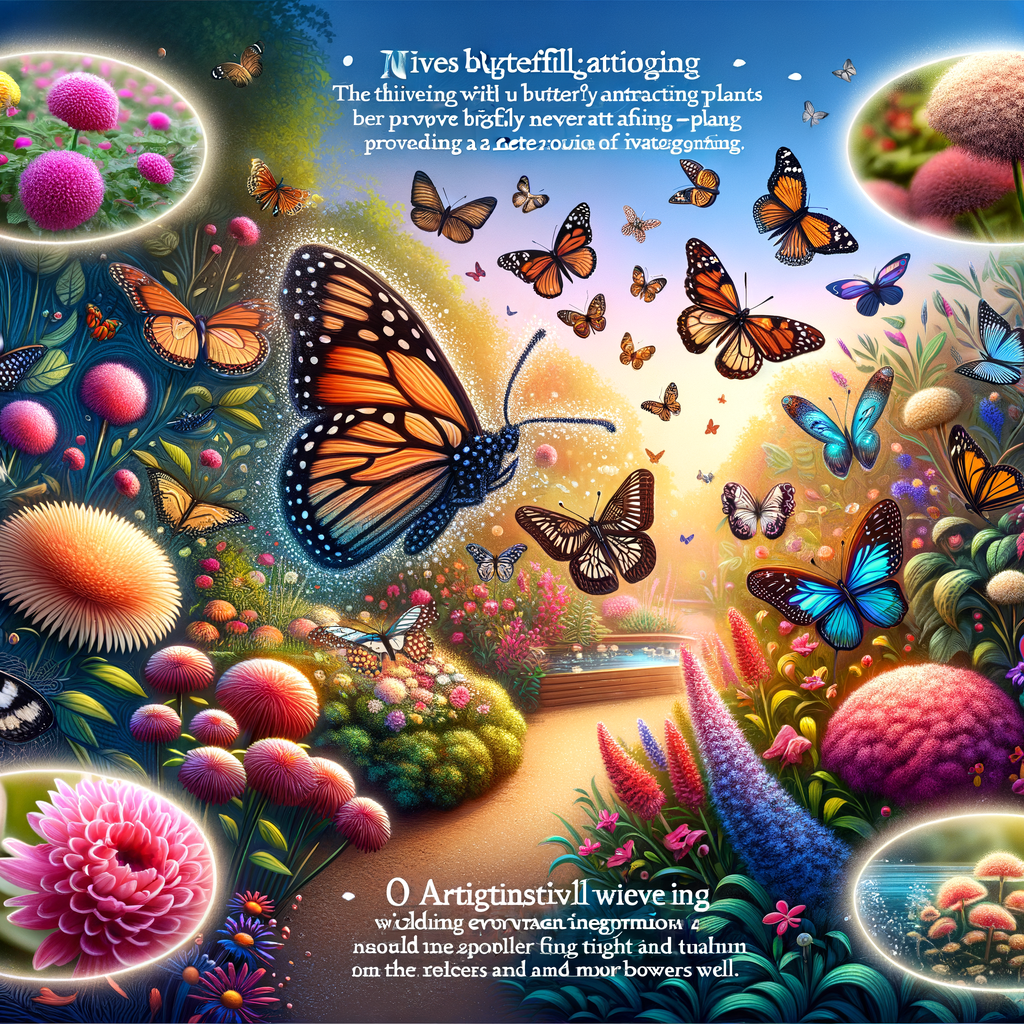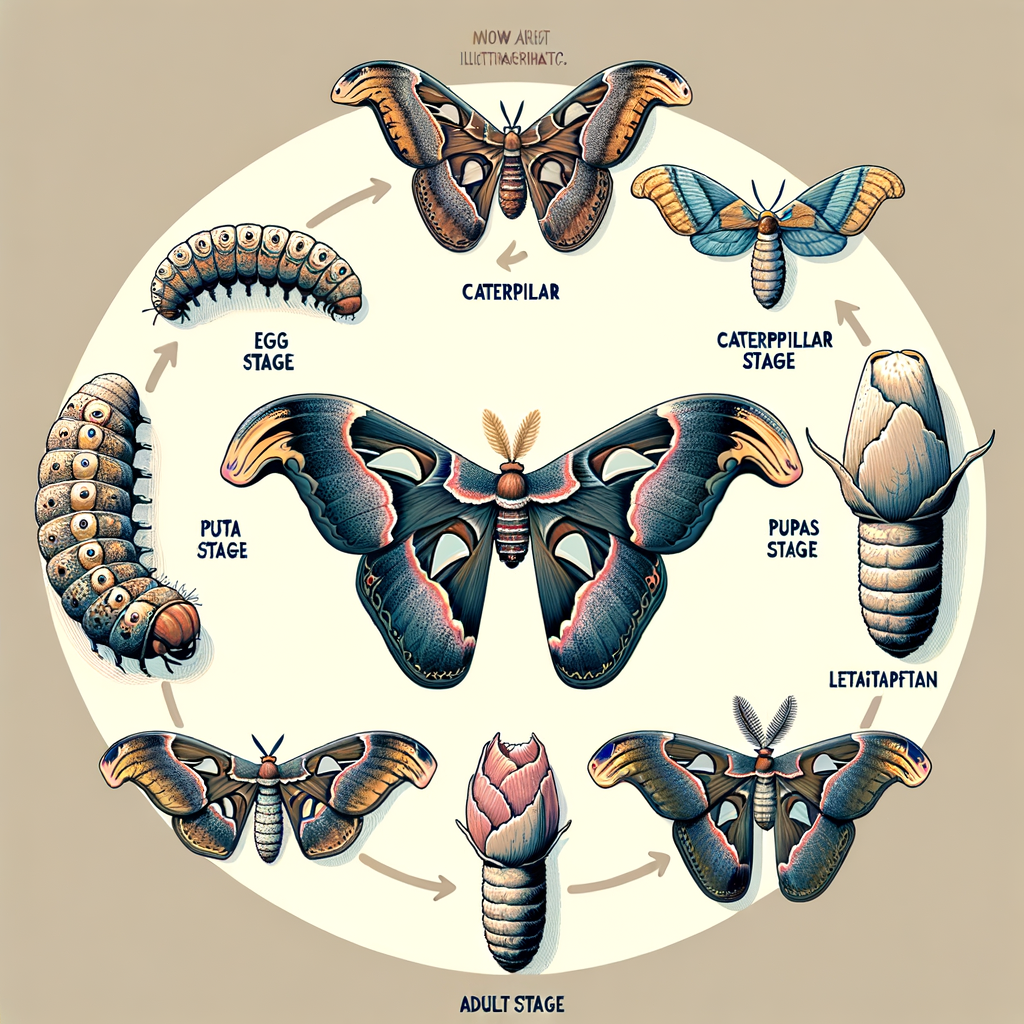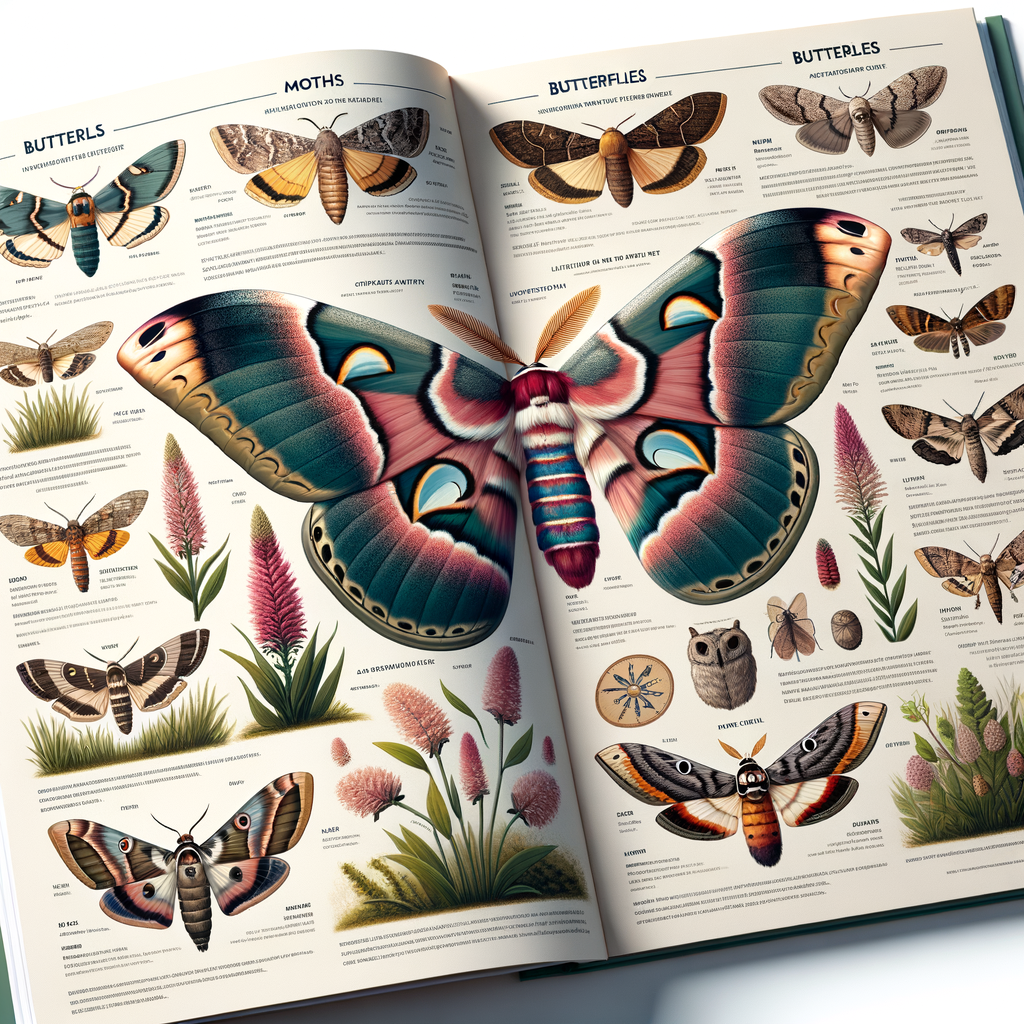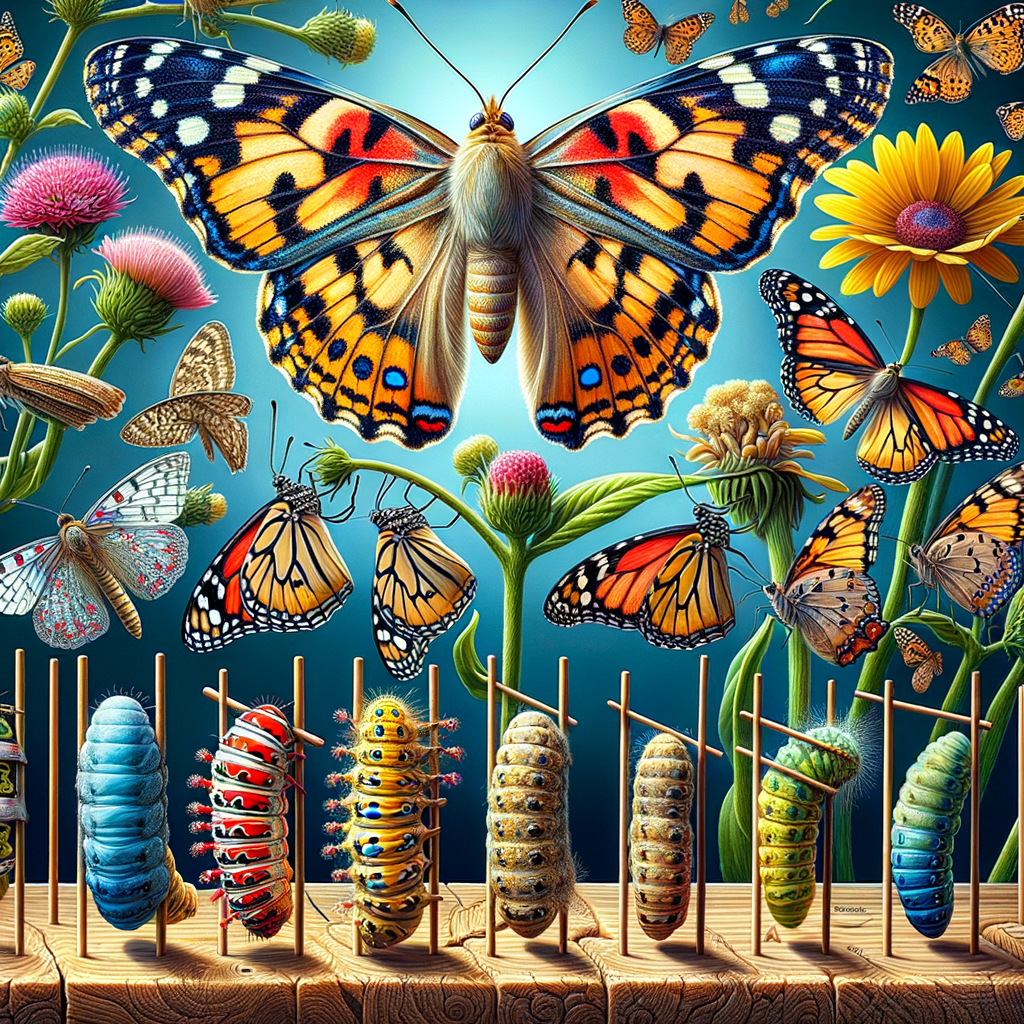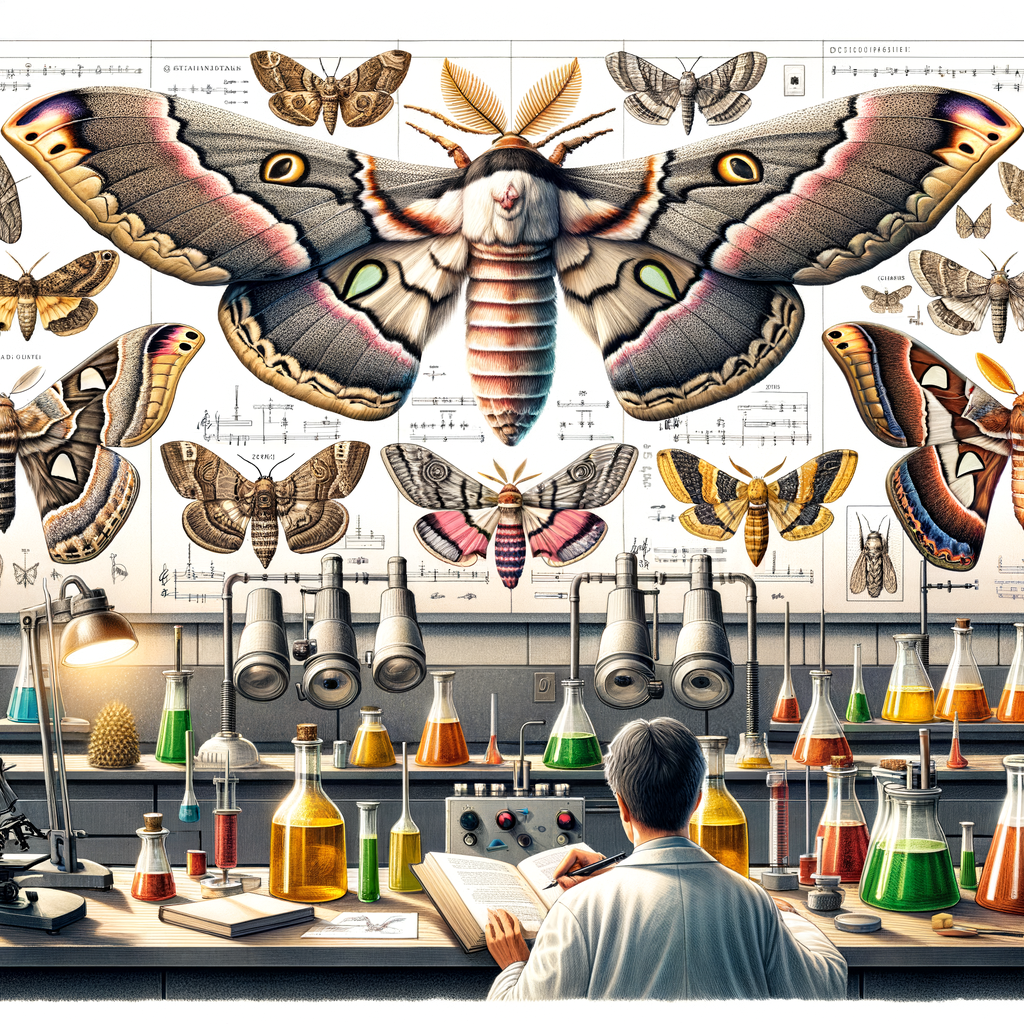Introduction to Butterfly Feeding Habits
Butterflies have unique and fascinating feeding habits. These habits are essential for their survival and play a significant role in the ecosystem. This article will dive into the captivating world of butterfly feeding habits.
- Importance of Butterfly Feeding
Like all living creatures, butterflies need to eat to survive. But their feeding habits are more than just a means to an end. They play a crucial role in pollination, helping plants reproduce.
When butterflies feed on nectar, they inadvertently carry pollen from one flower to another, aiding in the fertilization of plants. This process is vital for the survival of many plant species and contributes to biodiversity.
- Overview of Different Butterfly Species and Their Diets
There are over 20,000 species of butterflies worldwide, each with its unique dietary preferences. Most adult butterflies feed on nectar from flowers. However, some species prefer overripe fruit, tree sap, or even animal dung.
For instance, the Monarch butterfly feeds exclusively on milkweed nectar, while the Red Admiral prefers overripe fruit. Caterpillars, the larval stage of butterflies, have a different diet. They primarily feed on leaves, with some species being very particular about the type of leaves they eat.
Understanding the feeding habits of butterflies is fascinating and crucial for their conservation. By knowing what these creatures eat, we can help create environments that support their survival and contribute to the overall health of our ecosystems.
Butterfly Feeding Habits
Butterflies are not as simple eaters as we might think. Their diet varies depending on their species and stage of life. Let’s explore the typical butterfly diet and know their food preferences.
Exploring the Typical Butterfly Diet
Most butterflies feed on nectar from flowers. This sweet liquid provides them with the sugars they need for energy. However, some species also enjoy a more varied diet. They may feed on tree sap, rotting fruit, dung, pollen, or even the fluids from carrion. Some butterflies, like the Harvester, feed on aphid honeydew. It’s a fascinating world of dietary diversity!
Butterfly Food Preferences
Butterflies are quite picky eaters. They prefer nectar from certain types of flowers, and the flowers’ color, shape, and scent can all play a role in attracting butterflies.
For example, butterflies are particularly drawn to bright colors like red, yellow, orange, pink, and purple. They also prefer flat-topped or clustered flowers that provide a landing platform. The nectar’s sugar content also influences their choice. Butterflies typically prefer flowers with a high sugar content.
Butterfly Nectar Sources
Butterflies are known to be attracted to a variety of flowers for their nectar. Some of the most common nectar sources for butterflies include:
| Flower | Butterfly Species |
|---|---|
| Asters | Monarch, Painted Lady, Red Admiral |
| Butterfly Bush | Swallowtail, Monarch, Painted Lady |
| Zinnias | Monarch, Swallowtail, Painted Lady |
| Milkweed | Monarch, Queen, Soldier |
These flowers not only provide nectar but also serve as a habitat for butterflies to lay their eggs and for caterpillars to feed on.
How Butterflies Find and Choose Nectar Sources
Butterflies use their keen sense of sight and smell to find nectar sources. They are attracted to bright colors, especially red, orange, and yellow. They also have a special organ called a proboscis, which is like a long straw that they use to suck up the nectar from flowers.
Butterflies also choose nectar sources based on the sugar content of the nectar. They prefer flowers with high sugar content as it provides them with the energy they need to fly and reproduce.
Additionally, butterflies are more likely to visit flowers that are exposed to the sun and have a flat shape, as these characteristics make it easier for them to access the nectar.
Feeding Behavior
Observing butterfly feeding patterns can be a delightful experience. Butterflies primarily feed during the day, and their feeding habits are influenced by factors such as temperature, light intensity, and flower availability. They use their long, tube-like tongue, known as a proboscis, to sip nectar from flowers. The proboscis acts like a straw, allowing butterflies to reach the nectar deep within flowers.
Butterflies are also known to exhibit a behavior called ‘puddling,’ where they gather on wet sand or mud to drink water and extract minerals. These minerals are essential for their reproduction and survival. Interestingly, puddling is more common in male butterflies, as they pass on these minerals to females during mating.
Unique Feeding Behaviors Across Different Butterfly Species
While all butterflies share the basic feeding behavior of sipping nectar, different species have unique feeding habits. For instance, the Painted Lady butterfly can feed on over 100 different types of plants, making it one of the most versatile feeders. On the other hand, the Monarch butterfly is a specialist feeder, primarily feeding on milkweed plants.
Some butterfly species, like the Red Admiral and the Mourning Cloak, are known to feed on tree sap, rotting fruit, and even animal dung. These butterflies are attracted to the sugars and nutrients found in these unconventional food sources.
The Harvester butterfly is the only carnivorous butterfly species in North America. Instead of sipping nectar, it feeds on aphids, a type of small insect, during its larval stage. This unique feeding behavior sets the Harvester apart from other butterfly species.
Impact of Feeding Habits on Butterfly Survival
The diet of butterflies is a critical factor that determines their lifespan. The food they consume provides them with the necessary nutrients to live and reproduce.
Butterflies primarily feed on nectar from flowers. This nectar is rich in sugars, which provide them with the energy they need to fly and carry out their daily activities.
A diet rich in nectar can help these insects live longer. For instance, the Monarch butterfly, known for its long migration, can live up to 9 months if it gets enough nectar.
Feeding habits also significantly impact the reproduction of butterflies. A healthy diet ensures they have enough energy to mate and lay eggs.
Butterflies’ diets are not just about survival. They’re about thriving and ensuring the continuation of their species. By being aware of the impact of their feeding habits, we can better appreciate these beautiful creatures and their vital role in our ecosystem.
Impact of Changing Nectar Sources on Butterfly Populations
Our world is constantly changing, and these changes can significantly impact the delicate balance of nature. One such change is the availability of nectar sources for butterflies. Let’s delve into how this affects these beautiful creatures.
- Effects of Habitat Loss on Butterfly Feeding Habits
Like all creatures, butterflies rely on their habitats for survival. They need specific plants for feeding and breeding. When these habitats are lost due to deforestation, urbanization, or climate change, it can severely impact their feeding habits.
Without their preferred nectar sources, butterflies may have to travel further to find food, which can lead to increased energy expenditure and decreased survival rates. Some species may even struggle to find enough food to survive.
Final Thoughts
While we have gained considerable knowledge about the feeding habits of butterflies, there is still much to explore. Future research could focus on shedding light on the impact of environmental changes on their feeding habits. This could provide valuable insights into how these species adapt to changing conditions and the potential threats they face due to habitat loss and climate change.
Additionally, further studies could investigate the nutritional requirements of different species and the role of diet in their life cycle, reproduction, and longevity. This could help in the conservation of endangered species and contribute to our knowledge of biodiversity.
The world of butterfly feeding is fascinating and offers a unique perspective on these beautiful creatures. As we continue to explore and learn about their dietary habits, we learn about their survival strategies and gain insights into nature’s intricate workings. The journey of discovery continues, promising new knowledge of the remarkable world of butterflies.


